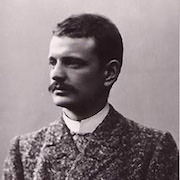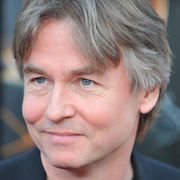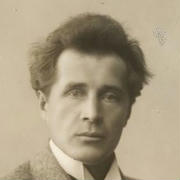Leevi Antti Madetoja (pronounced [ˈleːʋi ˈmɑdetˌojɑ]; 17 February 1887 – 6 October 1947) was a Finnish composer, music critic, conductor, and teacher of the late-Romantic and early-modern periods. He is widely recognized as one of the most significant Finnish contemporaries of Jean Sibelius, under whom he studied privately from 1908–10.
The core of Madetoja's oeuvre consists of a set of three symphonies (1916, 1918, and 1926), arguably the finest early-twentieth century additions to the symphonic canon of any Finnish composer, Sibelius excepted. As central to Madetoja's legacy is Pohjalaisia (The Ostrobothnians, 1923), proclaimed Finland's "national opera" following its successful 1924 premiere and, even today, a stalwart of the country's repertoire. Other notable works include an Elegia for strings (1909); Kuoleman puutarha (The Garden of Death, 1918–21), a three-movement suite for solo piano; the Japanisme ballet-pantomime, Okon Fuoko (1927); and, a second opera, Juha (1935). Madetoja's fourth symphony, purportedly lost in 1938 at a Paris railway station, never materialized.
Acclaimed during his lifetime, Madetoja today is seldom heard outside the Nordic countries, although his music has in recent decades enjoyed a renaissance, as the recording projects of a number of Nordic orchestras and conductors evidence. His idiom is notably introverted for a national Romantic composer, a blend of Finnish melancholy, folk melodies from his native region of Ostrobothnia, and the elegance and clarity of the French symphonic tradition, founded on César Franck and guided by Vincent d'Indy. His music also reveals Sibelius's influence.
Madetoja was also an influential music critic, primarily with the newspaper Helsingin sanomat (1916–32), in which he reviewed the music scenes of France and Finland, praising Sibelius in particular. In 1918, he married the Finnish poet L. Onerva; their marriage was tempestuous and remained childless. His health failing due to alcoholism, Madetoja died from a heart attack on 6 October 1947 in Helsinki.







